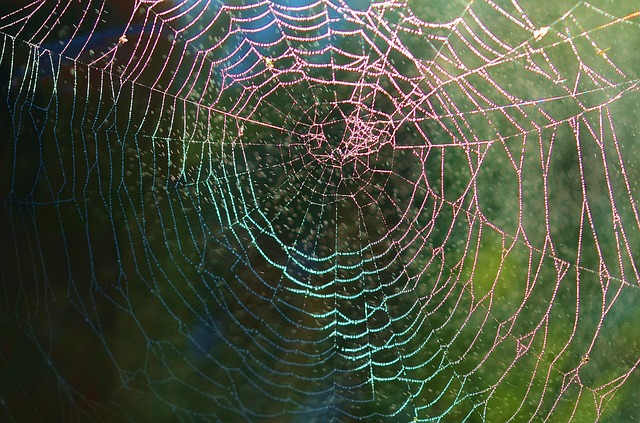1 March 2019. Dragline silk, also known as spider silk, is found in a new study to have a property that makes the natural material suitable for artificial muscles and actuators in robotics. A team from Massachusetts Institute of Technology describes its findings in today’s issue of the journal Science Advances.
Researchers from the lab of MIT civil and environmental engineering professor Markus Buehler studies properties of bio-inspired materials for their eventual use in technologies, such as additive manufacturing, the industrial form of 3-D printing, and robotics. Among the materials studied in Buehler’s Laboratory for Atomistic and Molecular Mechanics is dragline silk and synthetic forms of the substance. As reported by Science & Enterprise in May 2015, Buehler’s lab developed a synthetic form of spider silk with a process that can adjust the silk’s properties to meet special demands of users.
Spiders generate their silk from proteins, producing a biomaterial with the elasticity of rubber and strength comparable to steel, resulting in a toughness that exceeds the well-known synthetic materials kevlar and nylon. Spiders use their silk to catch prey, sense vibrations, and protect their young, with spider webs designed for an optimal balance of mechanical functions, longevity, and energy expended by the spider itself. Dragline silk contains 2 proteins with crystalline regions that provide the material’s toughness. One of crystalline regions is more rigid than the other, giving the material its flexibility.
In this new report, Buehler and colleagues discovered a new property of dragline silk, its ability to twist in response to humidity. Dragline silk was already known to respond, sometimes markedly, to changes moisture. This newly discovered twisting property, indicates a torsional force, the amount of force applied to twisting an object.
First author Dabiao Liu, on the faculty at Huazhong University of Science and Technology in Wuhan, China, says in an MIT statement, the researchers stumbled on this discovery almost by accident, in experiments testing dragline silk’s response to humidity. The researchers hung a weight on a string of dragline silk like a pendulum from the inside of a controlled-environment chamber. “When we increased the humidity,” says Liu, “the pendulum started to rotate. It was out of our expectation. It really shocked me.”
The team’s tests indicate the twisting motions begin while the silk is contracting, after the relative humidity reaches about 70 percent. And after reaching that threshold, the amount of torsional force can be regulated by changing humidity levels. In addition, this twisting property is found in silk produced across different spider species.
With computer simulations of the 2 main proteins in dragline silk, MaSp1 and MaSp2, the researchers believe they identified the mechanism responsible for the twisting property. The team traced this response to the presence of an amino acid called proline in MaSp2. The proline interacts with water molecules to disrupt hydrogen bonds in MaSp2, causing the molecules to deform asymmetrically, resulting in the twisting motions, all in a one direction.
Co-author Anna Tarakanova, now an engineering professor at University Connecticut, says this property opens up a number of new uses for dragline silk. “Silk’s unique propensity to undergo supercontraction and exhibit a torsional behavior in response to external triggers such as humidity can be exploited to design responsive silk-based materials that can be precisely tuned at the nanoscale,” says Tarakanova. “Potential applications are diverse, from humidity-driven soft robots and sensors, to smart textiles and green energy generators.”
More from Science & Enterprise:
- Fast 3-D Method Shapes Objects With Light
- 3-D Printed Implants Treat Spinal Cord Injury
- Micro Robots Made to Climb in Curved, Inverted Spaces
- Engineered Tissue-Polymer Replacement Spinal Discs Developed
- Bio-Friendly Film Material Devised from Silk, Carbon Nanotubes
* * *


 RSS - Posts
RSS - Posts
You must be logged in to post a comment.